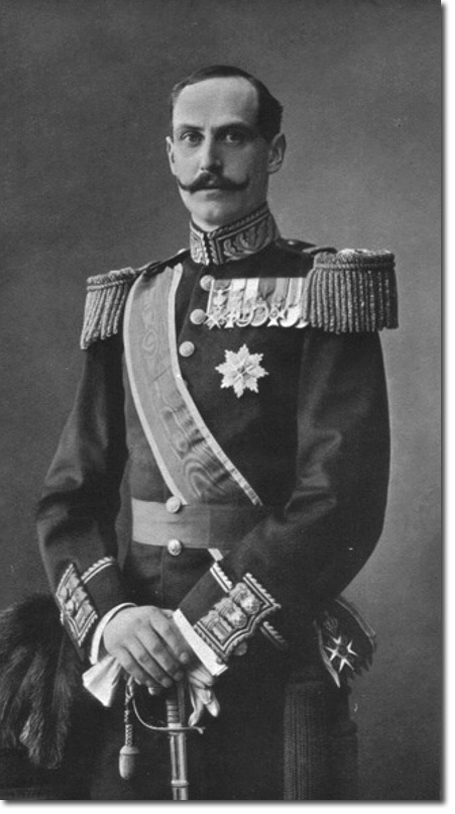|
|


|
|
King Haakon VII ruled Norway from 1905 to 1957 and is regarded as one of the greatest Norwegians of the 20th century. He is particularly well-regarded for his strength during the Nazi occupation of Norway. He was in fact not a Norwegian, he was from the Danish royal family. The union of Sweden and Norway was dissolved in 1905, and Haakon, at the age of 33, was elected to be the King of Norway.
He was born at Charlottenlund Palace on 3 Aug 1872 with the names Christian Frederik Carl Georg Valdemar Axel. He was Prince Carl of the Schleswig-Holstein-Sonderburg-Glucksburg branch of the House of Oldenburg which had been the Danish royal family since 1448. There was nothing new about a Dane ruling Norway as the House of Oldenburg had ruled both countries between 1536 and 1814 when the two countries were one kingdom. Prince Carl was the son of Crown Prince Frederik who finally became King Frederik VIII of Denmark in 1906 but died in 1912, to be succeeded by Carl’s elder brother Christian X. Prince Carl was educated at the Royal Danish Naval Academy and served as a Naval officer until 1905. On 22 July 1896 he married Princess Maud who was the daughter of Edward and Alexandra, Prince and Princess of Wales. Carl and Maud had one child, Crown Prince Olav, who succeeded his father as King of Norway. When he was chosen as the King of Norway, Prince Carl, now King Haakon VII, being a democrat, insisted on a referendum to give him a mandate to rule. The result (79 per cent) was an overwhelming vote in favour of retaining the Norwegian monarchy. Up until 1905 the monarch was a joint Norway-Sweden King, Oscar II who abdicated the Norwegian throne. Prince Carl endeared himself to the Norwegians by choosing the ancient name of Haakon which had not been used in Norway for 500 years. Haakon VI ruled Norway from 1340 to 1380. He did not get involved in politics but he made himself very popular when, in 1927, the Labour party gained the majority in the Norwegian parliament (Storting). The leader of the party was a very left-wing politician, Christopher Hornsrud, who was advised to refuse the post of Prime Minister, but King Haakon stated that he was also the King of the Communists and Hornsrud was elected. When the Nazis invaded Norway in 1940, King Haakon and his son Olav had time to leave Oslo and lived in Tromso and various forest hideaways (Queen Maud died in 1938). Haakon had refused to endorse Quisling as the Norwegian Prime Minister, a hard decision as this meant that Norway was at the mercy of the German occupation. Allied forces had to be withdrawn from Norway to concentrate on France but the Royal Navy sent a fleet to rescue the Norwegian King and government. They were embarked on HMS Devonshire but the German pocket battleships Scharnhorst and Gneisenau attacked and sank the aircraft carrier HMS Glorious and escorting destroyers Acasta and Ardent with the loss of 1,519 British naval personnel. For Haakon and the Storting, most of the war was spent in Britain, and radio broadcasts to Norway helped Norwegian morale. Many Norwegians wore jewellery made of coins with Haakon’s H7 monogram as a mark of resistance. While in Britain, in 1942, he was appointed Colonel-in-Chief of the Green Howards in succession to his mother-in-law Princess Alexandra who had died in 1925. Five years after their evacuation from Tromso, King Haakon and Olav returned to Oslo on HMS Norfolk to a warm welcome, on 7 June 1945. Just before his 83rd birthday, King Haakon had a bad fall in his bathroom in July 1955 which confined him to a wheelchair. He became depressed as he had been an active man, being a keen skier. He lost interest in current events and became more isolated from social occasions. He died on 21 September 1957 and was buried in the family mausoleum at Akershus Fortress. |
Regimental Details | Colonels-in-Chief
Armed Forces | Art and Culture | Articles | Biographies | Colonies | Discussion | Glossary | Home | Library | Links | Map Room | Sources and Media | Science and Technology | Search | Student Zone | Timelines | TV & Film | Wargames